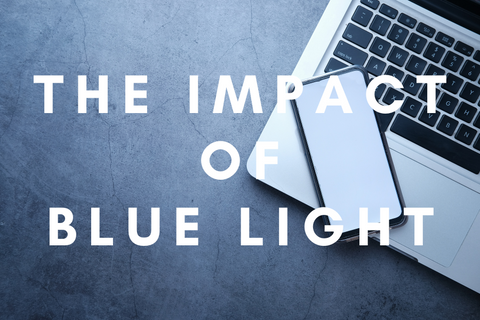The Impact of Blue Light: Illuminating the Facts

In our modern, digital age, we find ourselves constantly surrounded by screens, from smartphones to laptops, tablets, and televisions. While these devices have undoubtedly revolutionized our lives, they come with a side effect—exposure to blue light. The impact of blue light on our health and well-being is a topic that has gained increasing attention. Let's take a closer look at the effects of blue light and how we can mitigate its potential downsides.
What Is Blue Light?
Blue light is part of the visible light spectrum and is characterized by its short wavelength and high energy. It's present not only in natural sunlight but also in artificial light sources, especially LED and fluorescent lights. Additionally, digital screens emit a significant amount of blue light.
Blue Light and Sleep
One of the most well-documented effects of blue light is its role in disrupting our circadian rhythm, the body's internal clock that regulates sleep-wake cycles. Exposure to blue light, especially in the evening, can suppress the production of melatonin, a hormone that induces sleep. This, in turn, can lead to difficulties falling asleep and result in poor sleep quality.
To minimize this impact, experts recommend reducing screen time before bedtime and using "night mode" settings on devices that reduce the emission of blue light.
Digital Eye Strain
Many people who spend extended periods in front of screens experience digital eye strain. Symptoms can include dry eyes, headaches, blurred vision, and eye fatigue. Blue light contributes to these symptoms as it scatters more easily than other colors, making it harder for our eyes to focus.
To alleviate digital eye strain, follow the 20-20-20 rule: take a 20-second break to look at something 20 feet away every 20 minutes. You can also invest in blue light-blocking glasses that filter out a portion of blue light.
Long-Term Health Concerns
While more research is needed, some studies suggest a link between excessive blue light exposure and long-term health concerns. Prolonged exposure to blue light may increase the risk of age-related macular degeneration (AMD), a leading cause of vision loss. It's crucial to take precautions to reduce the risk, such as using blue light filters on screens.
Balancing Benefits and Risks
It's important to note that not all blue light is harmful. Blue light exposure from natural sunlight is essential for our well-being. It helps regulate our sleep-wake cycle, boosts mood, and enhances alertness. The key is to strike a balance between the benefits and potential risks.
How to Reduce Blue Light Exposure
-
Use blue light filters: Many devices offer built-in blue light filter settings, which can be scheduled to turn on during evening hours.
-
Wear blue light-blocking glasses: These specialized glasses can significantly reduce the amount of blue light reaching your eyes.
-
Adjust screen settings: Lower the brightness of your screens and use warmer color settings in the evening.
-
Limit screen time: Reducing screen time, especially before bedtime, can help your body's natural sleep-wake cycle.
-
Consider screen protectors: Applying blue light-filtering screen protectors to your devices can help mitigate exposure.
In conclusion, blue light is a ubiquitous presence in our digital world. While it offers numerous benefits, we must be mindful of its potential impact on our sleep, eye health, and overall well-being. By adopting good habits and using available technologies and tools, we can harness the advantages of our digital age while safeguarding our health.
